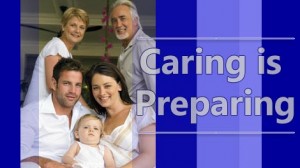Were you inspired to take action by the recent destructiveness of Hurricane Isaac? What if you suddenly find yourself in a drawn out emergency situation? Will you have what you need to survive for 72 hours without electricity or water? We usually say, “I should…” and then put off taking action as life happens. We are human after all.
Thankfully, September’s National Preparedness Month emphasis is a reminder of the small steps we can take to be more prepared. In our last newsletter, I outlined the three steps suggested on the FEMA website www.ready.gov: #1 Be Informed, #2 Make a Plan, and #3 Build a Kit.
If you have put off taking action, at least go to the interactive page and click on your state to identify the hazards you might expect for your area. While there, read about specific preparation for your top three disasters and how to get instructions when they happen. Ta Da! You have completed Step #1.
Today I want to explore best practices during and after a disaster. If disaster strikes, your best chance to escape harm is to:
- Remain calm and patient
- Put your disaster plan into action (assumes you have one – Step #2)
- Provide assistance to those with special needs in accordance with your plan
- Check for injuries
- Listen to local news for information and instruction.
Sounds like common sense, right? Harder to do in a life threatening situation, I’m sure!
These are more specific hints on how to deal with the most common hazards when they occur.
 FIRE
FIRE
- Only fight fires not in danger of blocking exit!
- Use back of hand to check if doors are hot (more sensitive than palm).
- Crawl under smoke.
- If trapped, close door, hang a sheet from the window.
- Once out of your home, meet at your designated spot.
- Never re-enter a burning building.
- Call 911 from a neighbor’s house.
 TORNADO
TORNADO
- During a watch, be attentive to weather conditions.
- Take immediate shelter if a warning is issued.
- Go to basement or internal hallway.
- Avoid windows, glass or potential flying objects.
- Leave windows closed.
- Monitor media and follow directions from local officials.
 FLOOD
FLOOD
- During a watch, prepare to evacuate.
- Fill empty containers and bathtub with water in case of contamination.
- When a flash flood warning is issued, evacuate immediately using primary or alternate evacuation route.
- Avoid flood waters and areas prone to flooding.
- Never drive onto flooded roads.
- Shut off liquefied petroleum tanks at source.
- Monitor media and follow directions from local officials.
We have all seen the news with stunned survivors. The emotions following a disaster can be devastating. Some things to try toremember in the aftermath:
- Assess the condition of your house using a flashlight, not an open flame.
- Do not enter an unsafe structure.
- Smell for gas leaks, starting with water heater.
- Shut off any damaged utilities.
- Clean up any hazardous or flammable spills.
- Treat injuries.
- Notify local and out-of-town contacts, then only use the phone to report life-threatening emergencies
- Document damage for insurance claims.
I hope you and I never have to put these emergency preparations to the test. Still, ’tis better to be ready even if the worst never comes!
Let me know when you complete Steps 1-3 so we can dance a jig together. If you read this newsletter and looked at the FEMA sight about the risks for your area, you can check off #1. Yes! Now print the list for your Emergency Kit and begin gathering those items for #3 – Build a Kit – when you next go grocery shopping.
Congratulations! You are taking the necessary steps to keep your family safe in an emergency. Way to go!





 FIRE
FIRE TORNADO
TORNADO FLOOD
FLOOD
